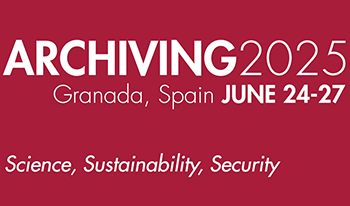

The National Museum of African American History and Culture’s Freedmen’s Bureau Project is a comprehensive initiative that has provided digital access to the Freedmen’s Bureau records. Previously, this important collection could only be accessed in person through the National Archives and Records Administration, with no way to search for specific people or topics. Smithsonian staff have worked with the public to index and transcribe the records to provide free full-text access to these invaluable records. To date over 600,000 pages of Freedmen’s Bureau records have been collaboratively transcribed by more than 60,000 individual volunteers. This data has been made available to the public for research in the Freedmen’s Bureau Search Portal. This groundbreaking search application is the result of more than a decade of data creation, processing, and cleaning; transcription; community engagement; and historical and genealogical research. The work of Smithsonian staff is ongoing and emerging technologies present exciting opportunities to expand access and continue to enable meaningful discoveries.

Museums are digitizing their collections of 3D objects. Video games provide the technology to interact with these objects, but the educational goals of a museum are often at odds with the creative forces in a traditional game for entertainment. Efforts to bridge this gap have either settled on serious games with diminished entertainment value or have relied on historical fictions that blur the line between reality and fantasy. The Vessel project is a 3D game designed around puzzle mechanics that remains a game for entertainment while realizing the benefits of incorporating digitized artifacts from a museum. We explore how the critical thinking present in solving puzzles can still encourage engagement of the story the artifacts have to tell without creating an historical fiction. Preliminary results show a preference for our in-game digital interaction over a traditional gallery and a desire to learn more about the artifacts after playing.

The past year of off-site telework allowed Preservation Research and Testing Division (PRTD) staff to do a deep dive into serious considerations about data analytics and data visualizations. Much of this work related to utilizing the tools we had available, linking the visualizations to data analytics for cultural heritage and heritage science research projects, with a strong focus on how best to adapt visualizations for specific audiences, ranging from scientific colleagues, conservation and collection care, interested public, and personnel wanting to use the information for a range of decision-making functions. Some of the factors we assessed related to the amount of information or data presented, whether to present minimal data with hover-over functionality to encourage exploration or allow different views for different audiences, what was “too much” data, what programs people were familiar with and the types of presentations, graphs, scatterplots, bar-charts, interactives etc. Significant discussions and reworking of visualizations answered some questions, while exposing many more.

Historic properties face challenges preserving and maintaining their physical heritage, as well as digitally sharing and accessing their history in a virtual environment. They are now utilizing new advanced imaging methods to research their cultural heritage artifacts. Recent advanced imaging in historic Civil War-era houses demonstrated the integration of imaging techniques and data to support conservation of these structures and research into their history and contents. New technical systems, including the latest narrowband multispectral imaging systems and higher resolution cameras, raise major challenges in not only the integration of new technologies, but also the ability to store, manage and access large amounts of data. Integration, preservation, access and collaboration with the image data from this program requires implementation of standardized digitization and data archiving practices.